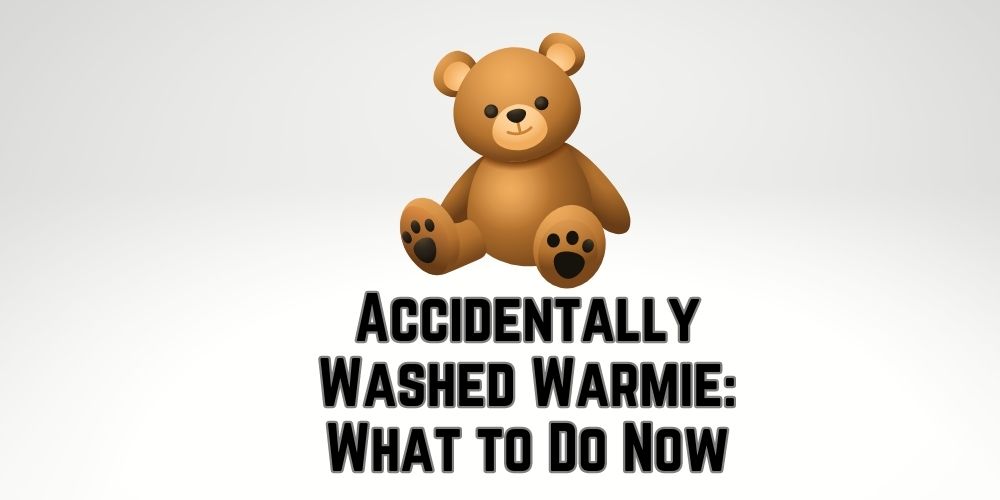
Warmies are a type of soft and cuddly stuffed animal or cushion that can be heated in the microwave to provide warmth and comfort. They are designed to be a safe and effective alternative to traditional heating pads, with a natural filling made of grains and dried herbs such as flaxseed and lavender.
To use a Warmie, simply heat it in the microwave for a short period of time, following the manufacturer’s instructions. The warm and soothing sensation can help to relieve stress and tension, ease sore muscles or cramps, and provide a comforting presence for children or adults alike.
Warmies come in a variety of shapes and sizes, from stuffed animals like bears or bunnies to cushions or neck wraps. They are often made from soft, plush fabrics that are gentle on the skin and comfortable to snuggle up to.
What are Warmies filled with?
The filling is contained within a soft outer cover made of plush or other soft materials that can be easily cleaned. The natural materials used in Warmies make them a more sustainable and eco-friendly alternative to traditional heating pads that use synthetic materials.
What grains or seeds are in Warmies?
Warmies are typically filled with natural grains such as flaxseed, millet, and wheat, along with dried herbs like lavender. Some Warmies may also contain natural materials like corn, barley, or rice. The filling is contained within a soft outer cover made of plush or other soft materials that can be easily cleaned. The natural materials used in Warmies make them a more sustainable and eco-friendly alternative to traditional heating pads that use synthetic materials.
Is it OK to wash Warmies?
If you do need to clean your Warmie, spot cleaning with a damp cloth is the best option. Avoid using any harsh chemicals or cleaners as they can also damage the filling. It’s important to let the Warmie air dry completely before using it again.
In summary, it’s best to avoid washing Warmies in a washing machine and instead opt for spot cleaning as needed to prolong the life and function of the product.
What is a Warmie used for?
Warmies are used for providing warmth, comfort, and relaxation to the body. They can be used as an alternative to traditional heating pads, hot water bottles, or other heat therapy products. Some common uses for Warmies include:
- Soothing sore muscles or cramps: The gentle warmth from a Warmie can help to ease muscle tension, relieve cramps, and reduce discomfort.
- Providing comfort and relaxation: The soft, plush material of a Warmie can provide a sense of comfort and relaxation, making them a popular choice for children and adults alike.
- Promoting better sleep: The warmth and gentle weight of a Warmie can help to promote relaxation and better sleep, making them a great addition to bedtime routines.
- Relieving stress and anxiety: The soothing warmth of a Warmie can help to relieve stress and anxiety, promoting a sense of calm and relaxation.
Overall, Warmies are a versatile product that can be used for a variety of purposes, from relieving muscle tension to promoting better sleep and relaxation.
What Happens if Warmies Get Wet?
Additionally, if the Warmie is heated after it has gotten wet, it can cause the filling to expand and burst, which can be a safety hazard.
To avoid damaging your Warmie, it’s best to keep it dry at all times. If it does get wet, air dry it thoroughly before attempting to heat it up again. If you notice any signs of mold or mildew, dispose of the Warmie and replace it with a new one.
If you accidentally washed your Warmie, don’t worry! There are a few things you can try to salvage it:
- Air dry: First, take the Warmie out of the washing machine and let it air dry completely. Don’t put it in the dryer.
- Check for damage: Once the Warmie is dry, check for any damage. If the stitching is loose or there are holes, it may not be salvageable.
- Fluff it up: If the Warmie is still intact but feels lumpy, try fluffing it up by kneading and manipulating the filling inside.
- Microwave: Warmies are meant to be microwaved to heat up, so you can try microwaving it for a shorter period of time than usual to see if it still works.
If the above steps don’t work, unfortunately, you may need to replace your Warmie. In the future, it’s important to check the care instructions on the product before washing to avoid accidents
Conclusion
Overall, Warmies are a popular and versatile product for anyone looking for a natural and effective way to provide warmth and comfort. They make great gifts for friends and family, and can be a soothing addition to any bedtime routine.
